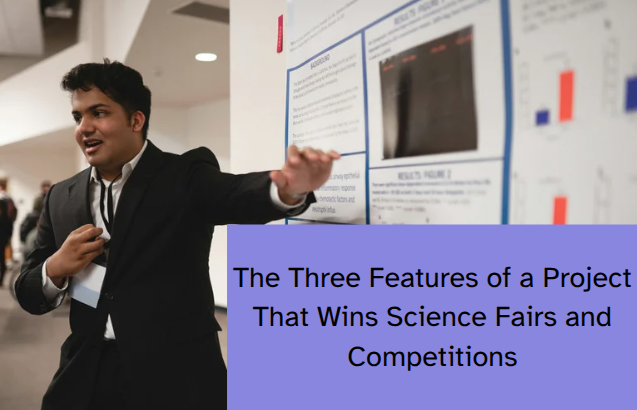Over the years, I’ve had the opportunity to participate in science fairs and competitions from different angles — as a mentor, a judge, and a university professor working with students on research. I’ve served as a judge in ISEF (the International Science and Engineering Fair), as well as several regional and local competitions. I’ve also mentored students whose projects have gone on to win awards at prestigious events.
Most recently, I participated as a judge in a regional science fair here in California, where students from across the state showcased an impressive range of projects. Every time I attend one of these fairs, I’m reminded of the patterns and features that often show up in the winning projects.
Of course, it’s important to note that judging can be subjective. What one judge finds impressive, another might see as average. But across many fairs and panels I’ve been part of, there are three key ingredients that consistently help projects rise to the top:
1. Novelty and Uniqueness
A winning project needs a spark — something that makes it stand out. This can come from either the application area or the scientific method itself.
Sometimes, it’s the context: applying a known technique to a niche or underexplored area. For example, I once saw a student use computer vision to analyze different species of birds — an application of AI, yes, but to a space where few high schoolers have ventured.
But even more impressive is when the method itself is different or more advanced than typical approaches to a problem. I remember a student who tackled traffic congestion, a common project theme. What made this student stand out was that instead of just running a simulation or collecting survey data, they developed a queuing theory model and validated it using real traffic camera feeds. It was both original and analytically deep — a clear sign the student went beyond the surface.
2. Impact and Usefulness
A project’s potential to make a difference — even if on a small scale — can be a major factor in how it’s judged. Judges often ask: What does this solve? Who benefits from it?
The impact doesn’t have to be world-changing. In fact, some of the best projects focus on local problems or specific communities. One student worked on optimizing water usage for backyard gardens using sensor-based automation. It wasn’t high-tech in the traditional sense, but the solution was practical, affordable, and addressed a real concern — especially in drought-prone areas.
Projects with a clear benefit tend to resonate more. When a student can articulate not just what they built, but why it matters and who it helps, it shows maturity, empathy, and purpose — qualities that judges remember.
3. Execution Excellence and Ownership
The third key ingredient is how well the project is executed — and how clearly the student can show that they were the one who did it. This might sound obvious, but it’s often the tie-breaker between good and great.
Judges look for technical depth and attention to detail. This means well-documented experiments, well-designed prototypes, clear graphs and charts, clean code (if applicable), and logically sound conclusions. Sloppy presentation or vague methods can sink even the most original idea.
Just as important is the student’s ownership of the work. Can they explain why they chose a particular algorithm? Do they understand the assumptions behind their experiment? Did they debug the code themselves? Judges can quickly tell when a project was carried by a parent, tutor, or mentor.
One student I judged this year had built a low-cost air quality monitoring system. It wasn’t flashy — it used off-the-shelf parts and open-source libraries. But what impressed everyone was how well the student could explain the system. She knew the specs of every component, the limitations of the sensors, the calibration steps she had to repeat, and even why she chose Python over Arduino C++. That level of ownership is hard to fake — and it’s what separates the winners.
Final Thoughts
Winning a science fair isn’t just about being a genius or having fancy equipment. It’s about thinking creatively, solving meaningful problems, and doing the hard work to bring an idea to life — all while staying curious and authentic.
To all the students out there preparing for competitions: focus on these three areas. Find a unique angle, aim for real-world usefulness, and dive deep into your work. Judges notice, and more importantly, you grow through the process.
(Note: to preserve anonymity, the projects mentioned in this blog post are variations of projects seen in competitions and students we mentor)


One response to “The Three Features of a Project That Wins Science Fairs and Competitions”
Thank you